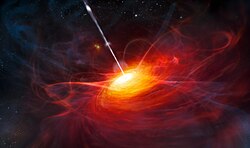Discovery
MOA-2009-BLG-387 was a gravitational microlensing event detected by the Microlensing Observations in Astrophysics collaboration on July 24, 2009, which searches and documents chance and brief alignments of stars with other stars or objects; such alignments cause a gravitational lens effect, which bends light and causes distorted, but magnified, images that can be interpreted. The detection of two caustics were logged over the next few days by the South African Astronomical Observatory, the Perth Observatory, and the Canopus Hill Observatory in Tasmania, with a separation of about seven days between caustic events. [1]
On June 7, 2010, long after the microlensing event had subsided, the science teams studying the star used the NACO adaptive optics facility at the Very Large Telescope in Chile to determine the actual apparent magnitude of the star that microlensed its background star, hoping to compare it to the magnitude of the star measured during the microlensing event. A discrepancy was found, a discrepancy that may have been a result of either error or of a planetary body. Interpretation of follow-up observations led to the planet's confirmation. The ratio between the planet's mass and its host star's mass is well-constrained, but a large interval of uncertainty exists because the host star's mass is known within a large confidence interval that spans the mass of all red dwarf stars. [1]
The discovery of the planet MOA-2009-BLG-387Lb was published on February 21, 2011 in the journal Astronomy and Astrophysics by the European Southern Observatory. [1]
This page is based on this
Wikipedia article Text is available under the
CC BY-SA 4.0 license; additional terms may apply.
Images, videos and audio are available under their respective licenses.


